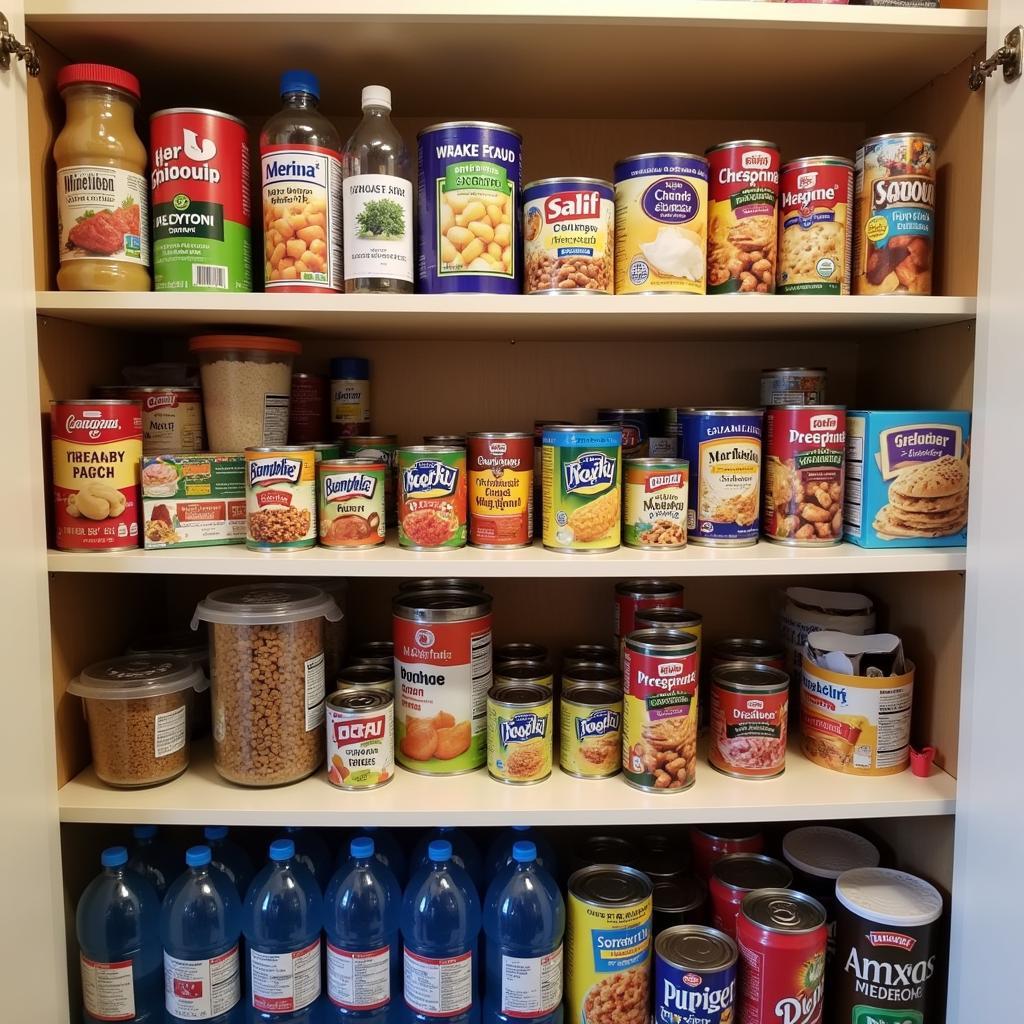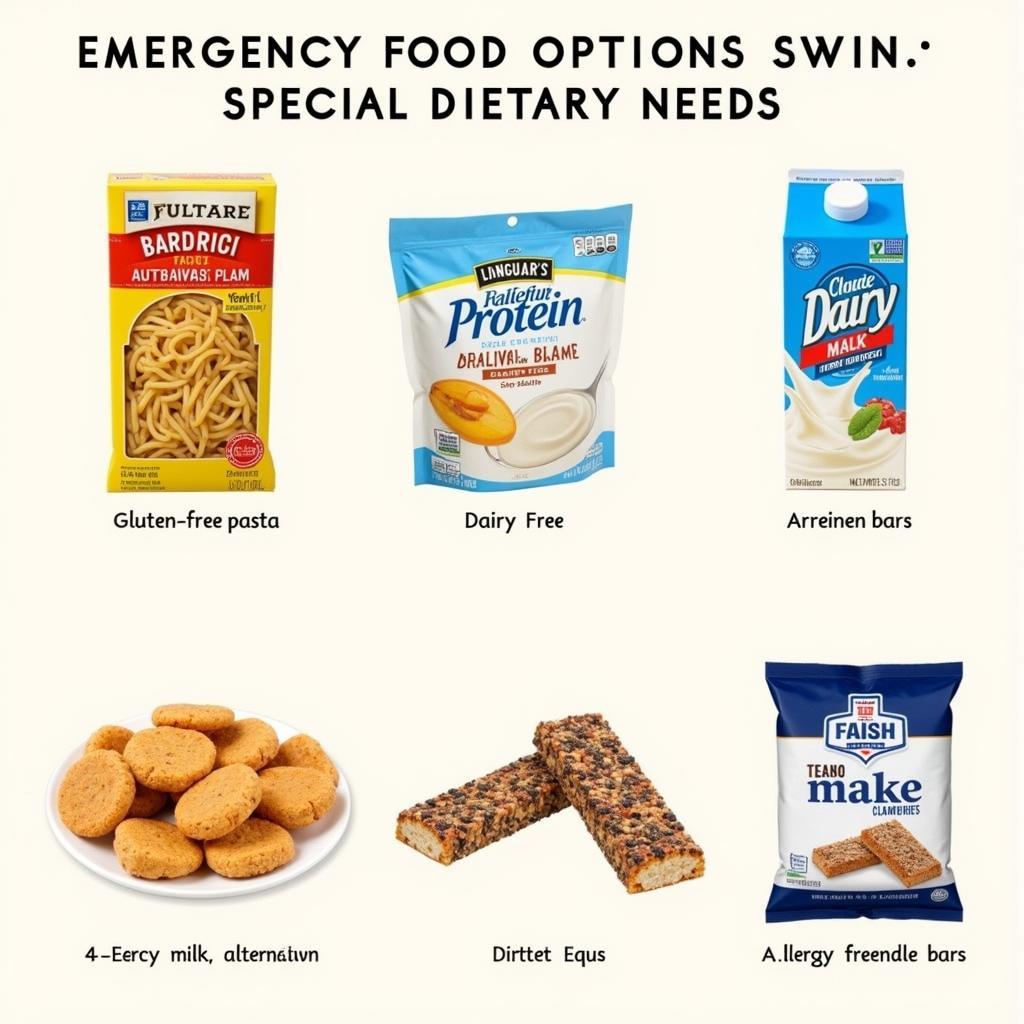Emergency food is essential for navigating unexpected disruptions to our daily lives. Whether it’s a natural disaster, a power outage, or a financial setback, having a well-stocked pantry can provide peace of mind and sustain you and your family through challenging times. This guide will explore the essentials of building a practical, nutritious, and long-lasting emergency food supply.
Why is Emergency Food Important?
Having a supply of emergency food isn’t about being paranoid; it’s about being prepared. Disasters can strike anytime, anywhere, and being able to feed yourself and your loved ones can be the difference between comfort and distress.
- Peace of Mind: Knowing you have food available reduces stress and anxiety during emergencies.
- Self-Sufficiency: You’re not reliant on potentially strained emergency services or depleted grocery stores.
- Financial Security: Food prices can fluctuate during emergencies. Having a stockpile can buffer you against these changes.
- Community Support: A well-stocked pantry allows you to help others in need.
 Pantry stocked with emergency food supplies
Pantry stocked with emergency food supplies
Building Your Emergency Food Stockpile: A Step-by-Step Guide
Creating an emergency food stockpile doesn’t have to be overwhelming. Here’s a practical approach:
-
Assess Your Needs: Consider your family size and dietary needs. Aim for at least a two-week supply, ideally three months or more.
-
Choose Shelf-Stable Foods: Opt for foods that require minimal to no preparation and have a long shelf life.
-
Prioritize Nutrition: Include a balance of protein, carbohydrates, and healthy fats.
-
Rotate Your Stock: Use the “first in, first out” method to prevent food from expiring. Regularly check expiration dates and replace items as needed.
Essential Emergency Food Items
Building a diverse and nutritious emergency food supply is key. Here are some essential items to include:
- Canned Goods: Fruits, vegetables, beans, soups, meats (tuna, chicken, salmon).
- Dried Goods: Rice, pasta, oats, dried beans, lentils.
- Protein Sources: Nuts, seeds, protein bars, powdered milk, dehydrated meals.
- Other Essentials: Cooking oil, salt, pepper, spices, sugar, honey, comfort foods.
Don’t forget water! Store at least one gallon per person per day for drinking and sanitation.
What About Special Dietary Needs?
If you or a family member have special dietary needs, factor them into your emergency food plan. Gluten-free options, lactose-free products, and allergy-friendly foods are readily available.
“Planning for dietary restrictions in advance is crucial for maintaining health and well-being during an emergency,” advises registered dietitian, Sarah Miller, RD.
 Gluten-free and allergy-friendly emergency food options.
Gluten-free and allergy-friendly emergency food options.
Maintaining Your Emergency Food Supply
Regularly inspect your emergency food supply to ensure it remains in good condition. Check for damaged packaging, signs of spoilage, and expired dates. Rotate your stock to keep it fresh and minimize waste.
“A well-maintained emergency food supply is an investment in your family’s security,” emphasizes emergency preparedness expert, David Chen. “It provides essential sustenance and fosters resilience in the face of unforeseen challenges.”
Conclusion
Building an emergency food supply is a proactive step towards ensuring your family’s well-being in times of crisis. By following these guidelines and stocking up on essential items, you can face any unexpected situation with confidence. Having emergency food provides not only sustenance but also peace of mind, knowing you’re prepared for whatever comes your way.
FAQ
- How much emergency food do I need? Aim for at least a two-week supply, ideally three months or more.
- What are the best shelf-stable foods? Canned goods, dried goods, and protein sources like nuts and seeds are excellent choices.
- How often should I rotate my emergency food? Follow the “first in, first out” method and regularly check expiration dates.
- What about water storage? Store at least one gallon of water per person per day.
- Where should I store my emergency food? A cool, dry, and dark place is ideal.
- What if I have special dietary needs? There are many gluten-free, lactose-free, and allergy-friendly emergency food options available.
- How can I make emergency food more palatable? Include spices, seasonings, and comfort foods to enhance flavor.
For more information and personalized guidance on building your emergency food stockpile, contact us at Phone Number: 02437655121, Email: [email protected] or visit our location: 3PGH+8R9, ĐT70A, thôn Trung, Bắc Từ Liêm, Hà Nội, Việt Nam. We have a 24/7 customer service team ready to assist you. Also check out our other articles on food storage and emergency preparedness on our website.